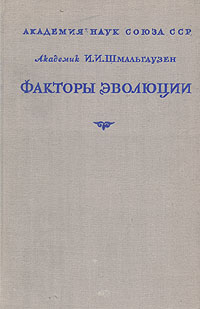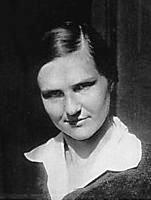
The history of the Great Patriotic War is shocking not only because of the colossal destruction in the places of military operations and the death of a huge number of people. The manifestations of courage, fortitude and creativity in literally all spheres of the country's life, which played their own roles in achieving victory, are amazing. Time reveals new sides of the nation's feat not only in the military archives made public in recent years, but also in open, exclusively "civilian" sources of information such as Wikipedia.
In connection with the celebration of Victory Day and the publication on the website of our Institute of frontline and everyday stories from the lives of wartime employees, such facts of the past as state awards to rear scientists deserve attention.
In June 1945, literally a month after the victory, the work of the director of our Institute, Academician I.I. Schmalhausen, who was evacuated from Moscow at the beginning of the war along with other leading academic scientists, was highly rewarded for his work during the war. He was awarded the Order of the Red Banner of Labor (https://ru.wikipedia.org/wiki/Шмальгаузь,_Иван_Иванович). And in 1946, Schmalhausen's outstanding work, the book "Factors of Evolution" (Fig. 1), was published. The book is considered a milestone in the development of the synthetic theory of evolution. This work integrated the achievements of the period of genetics, which Schmalhausen himself characterized as "dizzying successes" (https://arran.ru/exposition8_10?ysclid=lrgyy6d8pq550159945), into the discussion of evolutionary problems.
The publication of the book in 1946 coincided with another state award being received: an employee of the institute, geneticist Raisa Lvovna Berg, was awarded the medal "For Valiant Labor in the Great Patriotic War of 1941-1945." 6 works by R. L. Berg, during her doctoral studies as the only geneticist at the Institute of Evolutionary Direction, published in 1941-1943, are included in the bibliographic list of the aforementioned monograph by her scientific advisor I. I. Shmalgauzen.

Paradoxically, during the period of the defeat of Soviet genetics, inspired by T. D. Lysenko and his supporters at the 1948 session of the All-Union Academy of Agricultural Sciences, Berg, like most geneticists, was fired from her job (she remained practically unemployed for six years). The same fate befell Academician Shmalgauzen.
Both, however, were able to overcome trials that did not exist even during the war, without tearing their lives away from science.
The list of publications by R.L. Berg in the book “Factors of Evolution” (Schmalhausen, 1946) is given according to the library copy of the original edition:
1941 - Genetic analysis of two natural populations. Zhurn. Obshch. Biol. 2, No. 1.
1942 - Preservation of different mutability by populations of Drosophila melanogaster when they are transferred to the same conditions. DAN. Vol. 34, No. 7.
1942 - Relationship between mutability and the degree of isolation of populations of Drosophila melanogaster. DAN. Vol. 36, No. 2.
1942 - The significance of isolation for the evolution of dominance in natural populations of Drosophila melanogaster. DAN. Vol. 36, No. 9.
1943 – Correlation between mutability and regulatory capacity of the organism and its evolutionary significance. DAN.
1943 – Different frequency of occurrence of the yellow mutation in different populations of Drosophila melanogaster. DAN. Compiled by PhD Bulatova N.Sh.
